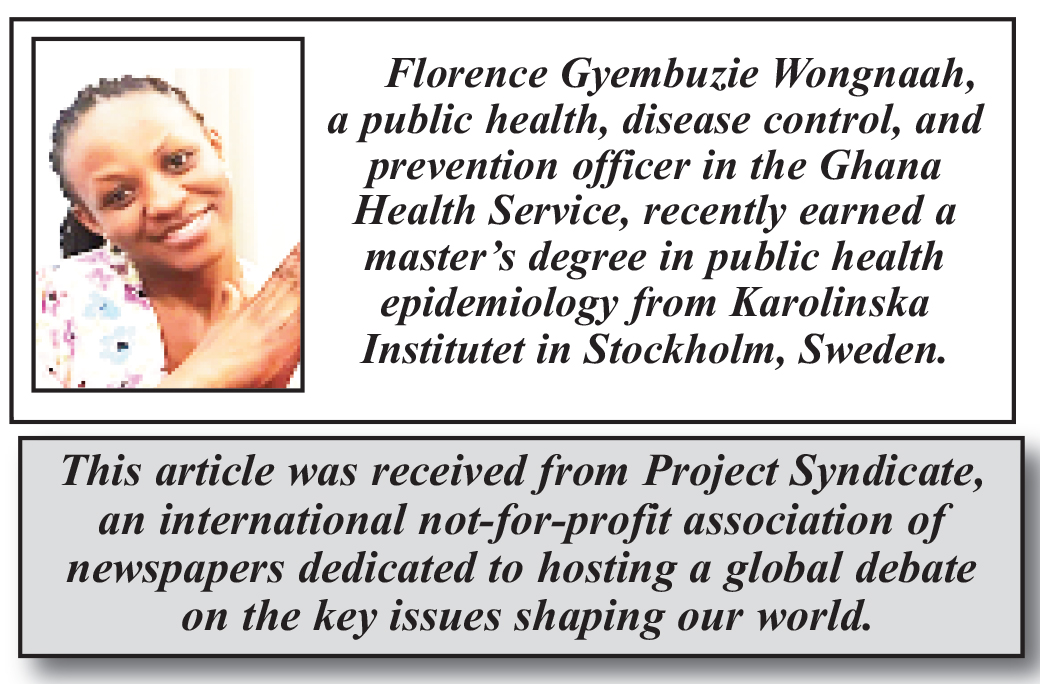By Florence Gyembuzie Wongnaah
STOCKHOLM – When Jonas Salk’s polio vaccine was found to be safe and effective in 1955, following a successful trial involving nearly two million American children, it marked a turning point in the fight against a highly infectious disease causing incurable paralysis or even death. Prior to Salk’s discovery, between 25,000 and 50,000 cases were recorded each year in the United States alone, and little was known about how the virus spread.
Salk created his injectable inactivated polio vaccine (IPV) by treating the virus with formalin. Around the same time, Albert Sabin was developing an oral polio vaccine (OPV), which uses attenuated (weakened) mutant strains that stimulate antibody production without causing the disease. Cheaper and easier to administer than Salk’s vaccine, Sabin’s live-virus version ultimately became more widespread in the global effort to eradicate polio, although it was introduced six years later.
The success of that effort cannot be overstated. Since 1988, when the World Health Assembly adopted a resolution to eliminate the disease worldwide and subsequently launched the Global Polio Eradication Initiative, wild polio cases have plummeted by more than 99%, from an estimated 350,000 cases to six reported cases in 2021. Two of the three strains of wild poliovirus have been eradicated, while the third remains endemic in only Pakistan and Afghanistan. This breakthrough can be attributed largely to mass immunization, but also to improved sanitation and hygiene.
Yet there is growing evidence suggesting that the OPV has outlived its usefulness, given the increasing number of vaccine-associated polio cases resulting from the presence of the live virus. While circulating vaccine-derived poliovirus (cVDPV), as it is officially known, is still relatively rare, its incidence is rising, with nearly 1,000 cases occurring globally in 2020. Such an increase suggests that cVDPV poses a significant barrier to eradicating polio.
To be sure, the OPV does have benefits. Unlike the IPV, for example, it immunizes the digestive tract, where polio replicates. Consequently, this version of the vaccine boosts immunity and prevents transmission, making it particularly useful in areas where the wild poliovirus continues to circulate (the IPV protects individuals from the disease but is less effective at averting its spread). Moreover, in areas with low-quality sanitation, the live-vaccine virus in human waste can spread among the community and help protect it.
In areas with low immunization rates, however, this community spread can prove dangerous. On rare occasions, after a long period of spreading unchecked between unvaccinated children, the virus mutates into a form that causes paralysis, leading to cVDPV infections.
The COVID-19 pandemic contributed to the increase in both wild polio and cVDPV cases, because vaccination campaigns were paused as the health authorities’ focus shifted to stopping the coronavirus’s spread. As a result, in 2020, 56 cases of wild polio were reported in Afghanistan, compared to 29 cases in the preceding year. The second half of 2020 was a period of intensified polio transmission in Pakistan as well, and the country’s surveillance system was severely affected. In Africa, Malawi recorded one case of wild polio in 2021, and Mozambique recorded eight cases in 2022; the latter were linked to a strain that circulated in Pakistan in 2019.
Yet cVDPV cases now outnumber those caused by wild polio, and outbreaks occur most commonly in Africa, even though the continent was declared free of wild poliovirus in 2020. They even occur in developed countries, including the US, the United Kingdom, and Israel, where immunization rates are low. This does not bode well for developing countries with large numbers of zero-dose children, owing to the interruption in mass immunization campaigns.
The pandemic also underscored the challenges of funding public-health programs when facing multiple crises. In March 2020, the World Health Organization redirected 60-70% of resources earmarked for polio eradication in Africa to fighting COVID-19. Moreover, according to one estimate, WHO guidelines for vaccination campaigns during the pandemic – precautions put in place to ensure the safety of health workers – increased operational costs by 50% or more.
COVID-19 has not been the only impediment to eradication efforts. Civil unrest, conflicts, and natural disasters have resulted in vaccine shortages, lower immunization coverage, and inadequate vaccination outreach services. A recent study found that 22 of the 40 countries reporting cVDPV cases or isolates had polio vaccination rates below 80%. If suboptimal coverage continues and vaccination rates fall below the threshold required for herd immunity, the risk of cVDPV outbreaks will rise.
Given this, stopping OPV use is a critical step in eradicating polio for good. Instead, the IPV must be used exclusively, as is the case in the US, Sweden, and other developed countries. This should enable all states to maintain population immunity, although more robust disease detection will be needed to ensure the elimination of polio worldwide.
As the Global Polio Eradication Initiative works toward this switchover, it must account for the fact that the IPV is five times more expensive than the OPV. In addition to helping low-income countries develop the capacity to manufacture doses, the initiative should focus on facilitating deeper partnerships between vaccine donors and the developing world. It should also study how the pandemic has affected vaccine confidence and emphasize immunization planning and reporting in conflict zones and disaster-prone areas. All of this will require more funding, resources, and support from donors.
The world has made great strides in the fight against polio, owing in large part to Sabin’s live-virus vaccine. But to eliminate the disease once and for all, it’s time to set aside the OPV. While vaccine-derived polio is relatively rare, it has caused paralysis in many people (including my friend), and the threat is growing. Addressing it head-on is our only hope of crossing the finish line.
Copyright: Project Syndicate, 2023.

